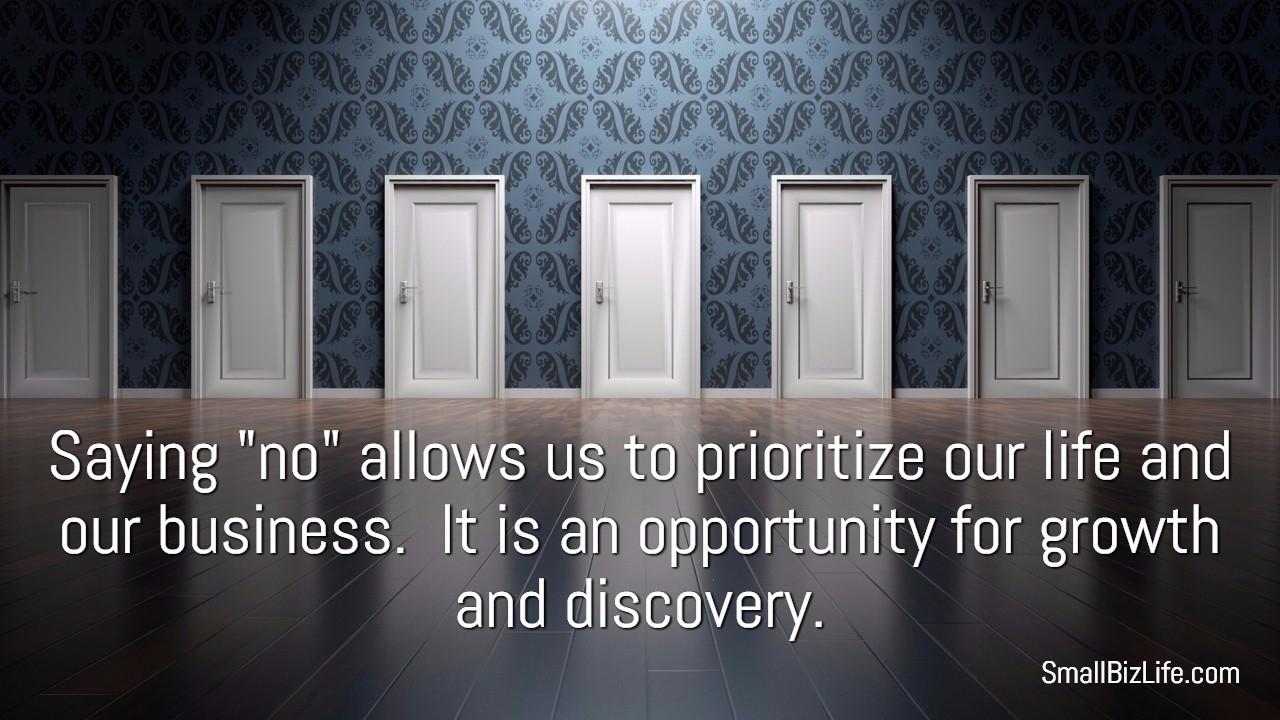Episode 59 - Using rejection to push forward

We all wish every call and meeting led to a new sale, but hearing "No" is common in business. In this episode, we discuss how to use rejection to push your business forward so you may hear more "Yes" in the future.
Learn to say "No"
Most small business owners are terrible at saying "No". That is part of the reason that our schedules are overloaded. As you become better at saying "No", it becomes easier for you to hear it. It helps give you clarity, knowing that not every proposed business relationship is a good fit. It will also help you better assess if a customer is a good fit for your business.
Incorporate rejection into your metrics
Good sales people do not just look at how many deals they close. They also look at the number of connections made, meetings set, and follow-up calls. This allows them to see how many proposals must be made to book a sale. When you move away from sales metrics and start focusing on other key goals, it is easier to hear rejection because you know that one additional rejection gets you closer to the "Yes" you are looking for.
Listen and ask questions
When you get a rejection, examine if that opportunity was a good one for your business. Was the client the right fit? Were you too focused on the additional revenue? Ask for honest feedback. Ask questions. Do not get defensive and do not try to sell again. Having a post proposal survey might be an excellent way for you to get the feedback you need at a distance.
Look for opportunities to grow
After following up, are you seeing a pattern in those potential customers who are not working with you? This is a great opportunity for you to assess if you are going after the correct market and to see if your message may not be resonating well with those potential customers. You should also assess if you are targeting the correct potential customer. Assessment is an important part of the process.
Be nimble
One of the best parts of being a small business owner is that we can pivot quickly. After you have assessed the feedback and the quality of the potential customer, you can quickly make changes. Before making changes, make sure the potential customers giving you feedback are aligned with your ideal customer. Don't make changes until you see patterns. If you change your business based off the feedback of one business (unless you know it is an issue), you might be moving farther away from your ideal customer.
Listen to the show on iTunes, Stitcher, YouTube, Google Play Music, iHeart Radio, or with the player below
FREE DOWNLOAD: The system to guide your leads to sales
(The 1st question has saved us hundreds of hours of wasted time)
We all have wasted time trying to sell to people before they are ready. So we came up with this simple system to guide our leads to sales and have included 21 questions you need to answer to make sure they are ready to make the sale.
